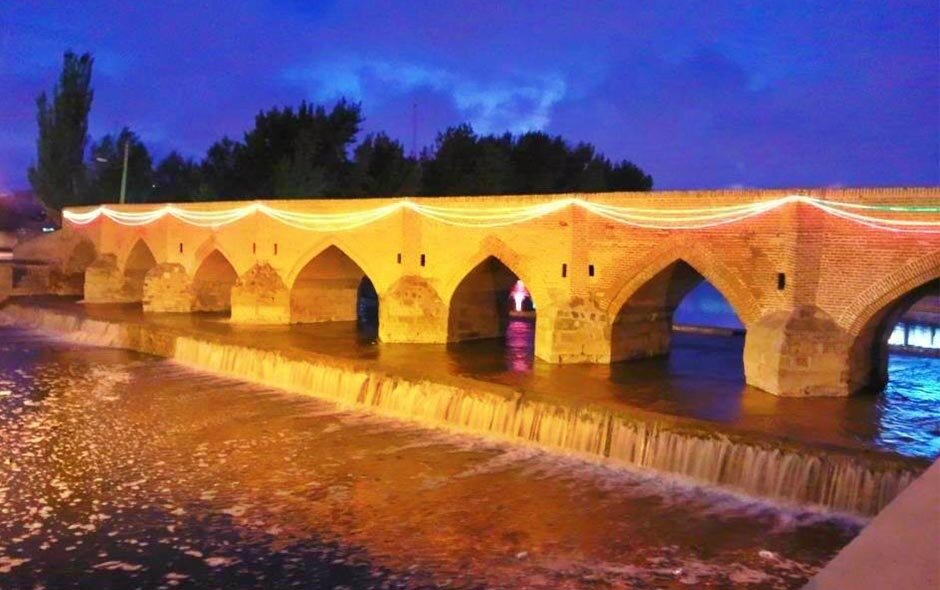Lengthy ancient bridge being reinforced, restored in northeast Iran

TEHRAN –- A new round of restoration work has been commenced on the Safavid-era (1501–1736) Shaharchay bridge, which is considered one of the longest of its kind in northeast Iran.
This phase of the restoration project seeks to strengthen, reinforce and repair the foundation of the bridge as well as replace the worn-out bricks and stones, provincial tourism chief Ahmad Hamzezadeh announced on Monday.
Constructed from bricks, stone slabs, and mortar, the monument is located in Miyaneh, East Azarbaijan province. The monument was inscribed on the National Heritage list in 1969.
The rehabilitation work is carried out under the supervision of experienced cultural heritage experts, the official added.
The style of architecture and the type of materials used in the construction of the bridge is the same as that of the gorgeous Si-o-Se-Pol, a historical bridge with 33 arches in the city of Isfahan, sources say.
The only difference is that the Shaharchay bridge has 23 arches with a simpler structure.
Iranian Azerbaijan was a center of several ancient civilizations. It formed part of Urartu and later of Media. In the 4th century BC, it was conquered by Alexander the Great and was named Atropatene after one of Alexander’s generals, Atropates, who established a small kingdom there. The area returned to Persian (Iranian) rule under the Sasanians in the 3rd century CE.
Soaked in history and culture for millennia, the provincial Tabriz embraces several historical and religious sites, including Jameh Mosque of Tabriz and Arg of Tabriz, and UNESCO-registered Tabriz Historic Bazaar Complex to name a few. The city became the capital of the Mongol Il-Khan Mahmud Gazan (1295–1304) and his successor. Timur (Tamerlane), a Turkic conqueror, took it in 1392. Some decades later the Kara Koyunlu Turkmen made it their capital, it was when the famous Blue Mosque was built in Tabriz.
Tabriz retained its administrative status under the Safavid dynasty until 1548 when Shah Tahmasp I relocated his capital westward to Qazvin. During the next two centuries, Tabriz changed hands several times between Persia and the Ottoman Empire. During World War I, the city was temporarily occupied by Turkish and then Soviet troops.
ABU/AFM
